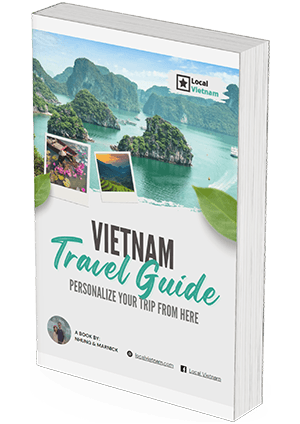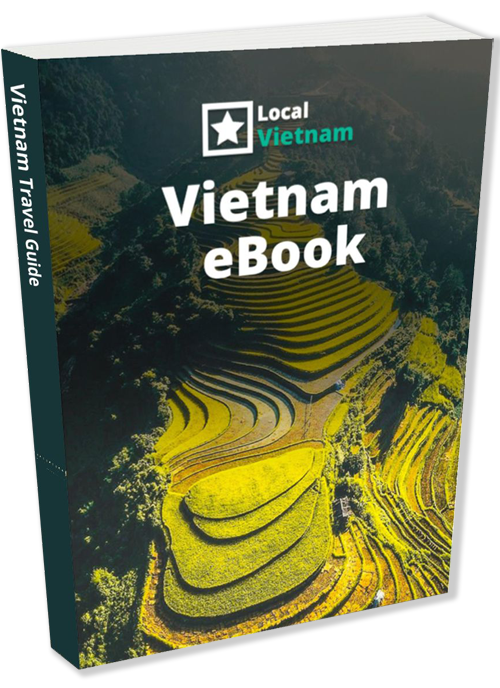Vietnam’s history is a rich tapestry woven with moments of both struggle and triumph. The country’s long fight for independence includes nearly a millennium of Chinese domination, the challenges of French colonial rule, and the devastation of the Vietnam War. Understanding this turbulent past offers valuable insight into the resilience, culture, and identity of the Vietnamese people today.
1. Prehistoric and ancient Vietnam
First Settlements (3000 BCE – 1000 BCE)
Vietnam’s history begins in the fertile Red River Delta, where early tribes migrated from southern China. These communities laid the foundation for Vietnamese civilization, cultivating rice and developing rudimentary tools for farming and hunting.
Dong Son Culture (1000 BCE – 200 BCE)
This era saw the rise of the Dong Son culture, renowned for its sophisticated bronze drums, which symbolized power and status. The period marked significant advancements in agriculture, metallurgy, and social structures, shaping the early identity of Vietnam.
2. Millennia under Chinese domination (208 BCE – 939 CE)
Nam Viet Kingdom (208 BCE)
The Nam Viet Kingdom was established by Chinese general Zhao Tuo, encompassing parts of northern Vietnam and southern China. Though nominally independent, it marked the beginning of Chinese influence over the region.
Han Conquest (111 BCE)
Northern Vietnam fell under Han Chinese control, initiating nearly 1,000 years of Chinese domination. This period deeply influenced Vietnamese culture, introducing Confucianism, Taoism, Chinese writing systems, and administrative practices that shaped governance and social structures.
Trung Sisters’ Rebellion (40 CE)
The Trung sisters, legendary female leaders, led a courageous rebellion against the Chinese, establishing temporary independence. Though short-lived, their legacy remains a powerful symbol of resistance and national pride.
Vietnam Gains Independence (939 CE)
Ngo Quyen’s decisive victory at the Battle of Bach Dang River ended Chinese rule, establishing Dai Viet as an independent state. This marked the beginning of a new era of sovereignty and cultural identity for Vietnam.
3. Vietnamese dynasties and territorial expansion (939 – 1802)
Early Dynasties
Following independence, the Ly Dynasty (1010–1225) established a stable government, with Hanoi (then Thang Long) as its capital. The Tran Dynasty (1225–1400) further strengthened Vietnam, successfully resisting multiple Mongol invasions in the 13th century under General Tran Hung Dao’s leadership. These dynasties laid the foundation for a unified and prosperous state.
Defeat of Champa (1471)
Under Emperor Le Thanh Tong of the Le Dynasty, the Dai Viet Kingdom launched a decisive campaign against the Champa Kingdom, marking a significant southward expansion. The victory integrated Champa territories into Vietnam, transforming its cultural and geographic landscape.
Nguyen vs. Trinh Conflict (16th – 18th Century)
Vietnam faced internal strife as the Nguyen Lords controlled the south, while the Trinh Lords dominated the north. Despite these divisions, the period saw economic growth and further territorial expansion into the Mekong Delta, setting the stage for eventual reunification under the Nguyen Dynasty.
4. French Colonial Era (1858 – 1945)
France’s Initial Invasion (1858)
The French began their colonial campaign by capturing Da Nang, using it as a foothold to expand their influence. By 1859, Saigon fell under French control, marking the start of direct colonial rule in southern Vietnam.
Formation of French Indochina (1887)
By the late 19th century, Vietnam was integrated into French Indochina, along with Laos and Cambodia. French rule brought economic exploitation through plantations and forced labor, while Vietnamese traditions and education systems faced suppression. Urban areas like Hanoi and Saigon were transformed into colonial administrative and economic hubs.
Nationalist Movements (early 20th century)
Resistance to French rule intensified in the early 20th century. Intellectuals and revolutionaries like Ho Chi Minh and groups such as the Vietnamese Nationalist Party (VNQDD) sought to rally the population against colonial oppression. Their efforts laid the groundwork for future struggles for independence.
5. The First Indochina War (1946 – 1954)
Japanese Occupation (1940-1945)
World War II saw Vietnam fall under Japanese control, further undermining French colonial authority. This period created political instability and fueled nationalist movements.
Viet Minh Formation (1941)
Amid the turmoil, Ho Chi Minh established the Viet Minh, a communist-led resistance group aiming to fight both Japanese occupiers and French colonialists. By 1945, the Viet Minh declared Vietnam’s independence following Japan’s surrender, though the French attempted to reclaim control.
Dien Bien Phu (1954)
The First Indochina War culminated in the Battle of Dien Bien Phu, where Viet Minh forces, under General Vo Nguyen Giap, decisively defeated the French. This historic victory led to the Geneva Accords, which ended French colonial rule and temporarily divided Vietnam into the communist-led North and the anti-communist South, setting the stage for future conflict.
6. The Vietnam War (1955 – 1975)
Escalation of Conflict (1960s)
Following the division of Vietnam at the 17th parallel, tensions escalated between the communist North, led by Ho Chi Minh, and the anti-communist South, backed by the United States. The US increased military involvement, deploying combat troops and resources to counter the growing influence of the Viet Cong insurgents in the South.
Tet Offensive (1968)
A critical moment in the war, the North Vietnamese and Viet Cong launched the Tet Offensive, a series of coordinated attacks across South Vietnam during the Tet Lunar New Year. Although militarily repelled, the offensive shocked the US public and eroded domestic support for the war, marking a significant shift in US policy.
Fall of Saigon (1975)
The war concluded when North Vietnamese forces captured Saigon on April 30, 1975. The South Vietnamese government collapsed, and the country was reunified under communist rule as the Socialist Republic of Vietnam. This event marked the end of a devastating conflict that left deep scars on Vietnam and the international community.
7. Reunification and Post-War Recovery (1976 – Present)
Socialist Republic of Vietnam (1976)
Following the fall of Saigon, Vietnam was officially reunified as the Socialist Republic of Vietnam. However, the country faced significant challenges, including widespread poverty, a devastated infrastructure, and international isolation due to its communist alignment.
Cambodian-Vietnamese War (1979)
Vietnam intervened in Cambodia to overthrow the Khmer Rouge regime, which had committed atrocities under Pol Pot’s leadership. This conflict strained Vietnam’s resources and worsened relations with China, leading to a brief but intense border war in the same year.
Economic Reforms (1986)
Recognizing the limitations of a centrally planned economy, Vietnam adopted the Doi Moi (renovation) policy. This introduced market-oriented reforms, opened the country to foreign investment, and sparked significant economic growth, transitioning Vietnam into a thriving, export-driven economy.
International Integration (1990s – Present)
Vietnam began normalizing relations with former adversaries, including the United States in 1995. The country joined international organizations like ASEAN and the World Trade Organization, solidifying its position as an emerging economic power in Southeast Asia. Today, Vietnam is celebrated for its dynamic economy, rich culture, and resilience, attracting global attention as a significant player on the world stage.
8. Vietnam’s Legacy in the Modern World
Resilience through struggle
Vietnam’s history is a testament to its people’s determination and adaptability. From millennia of Chinese domination to overcoming French colonialism, the Vietnam War, and economic hardships, the nation has repeatedly demonstrated its ability to rise above challenges. This resilience remains a source of national pride and an integral part of Vietnam’s identity.
Cultural heritage and historical impact
Vietnam’s dynasties, resistance movements, and modern reforms have left a profound legacy that shapes its culture today. Traditional values of filial piety, respect for elders, and community spirit coexist with a forward-looking society driven by economic growth and international integration. The country’s rich cultural tapestry—evident in its architecture, cuisine, and festivals—draws millions of visitors, eager to explore a land where history and progress intertwine seamlessly.
Global presence
Vietnam has emerged as a key player in Southeast Asia, contributing to global trade and diplomacy while preserving its cultural uniqueness. Its historical journey continues to inspire both its people and the world, offering lessons in perseverance, unity, and the importance of cultural heritage.
Tips for exploring Vietnam’s history while traveling
1. Cham Civilization
Learn about the ancient Champa Kingdom, known for its Hindu and later Buddhist influences.
- My Son Sanctuary (Quang Nam): A UNESCO World Heritage Site, these ancient temple ruins reflect Cham architectural and cultural sophistication.
- Museum of Cham Sculpture (Da Nang): Home to an extensive collection of Cham artifacts, offering insights into the kingdom’s art and religion.
2. Vietnamese Dynasties
Experience the grandeur of imperial Vietnam through its preserved monuments.
- Imperial Citadel of Hue (Hue): Once the seat of the Nguyen Dynasty, this sprawling complex includes palaces, gardens, and temples.
- Royal Tombs of Hue (Hue): Elaborate mausoleums dedicated to Nguyen emperors, blending Confucianism, Buddhism, and Vietnamese architecture.
- Hoa Lu Ancient Capital (Ninh Binh): The first capital of Vietnam during the Dinh and Le dynasties, with temples honoring these early rulers.
3. French Colonial Era
Discover remnants of French influence in architecture and historical sites.
- Hanoi Opera House (Hanoi): A prime example of colonial-era design inspired by Parisian architecture.
- Notre-Dame Cathedral Basilica (Ho Chi Minh City): A striking Catholic cathedral reflecting French Gothic influences.
- Hoa Lo Prison (Hanoi): Also known as the “Hanoi Hilton,” this site tells the story of both French colonial repression and the Vietnam War.
4. Vietnam War
Understand the tumultuous conflict that shaped modern Vietnam.
- Cu Chi Tunnels (Ho Chi Minh City): Explore the underground network used by Viet Cong soldiers during the war.
- War Remnants Museum (Ho Chi Minh City): A sobering but informative look at the war through photographs, artifacts, and stories.
- DMZ (Demilitarized Zone, Central Vietnam): Visit sites like Khe Sanh Combat Base and the Vinh Moc Tunnels for insights into the war’s impact on this region.
5. General Vietnamese History
Broaden your understanding of Vietnam’s past across all eras.
- Vietnam National Museum of History (Hanoi): A comprehensive museum featuring artifacts from prehistoric times to the modern era.
- Ho Chi Minh Museum (Hanoi): A tribute to Vietnam’s revolutionary leader, offering insights into the country’s struggle for independence.
- Vietnam Museum of Ethnology (Hanoi): While focused on ethnic groups, this museum provides historical context for Vietnam’s cultural diversity.


